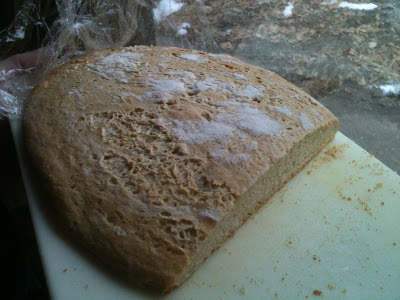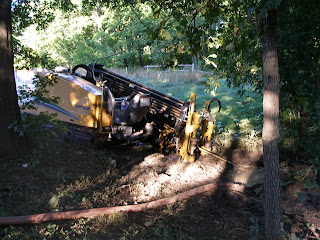Cover Crop Plant Info from Commodity Traders
Medium Red Clover is the most widely grown of the true clovers. It is a short-lived perennial legume. Medium Red Clover is used for short rotation hay fields and include into pasture mixes with orchard grass & timothy or tall fescue. It is a perennial which acts as a biennial under usual farm conditions. Red Clover normally produces two cuttings during the hay year. Red Clover grows on soils with pH values below those necessary for satisfactory production of alfalfa and sweet clover. It best turned under during its second or third year when nitrogen and biomass production are at their maximum. For best results, sow in spring with an oat nurse crop. Can also be summer sown, or sown mid-winter for frost seeding.
Number of Seasons: Biennial
Planting Depth: .5-1"
Plant: Mid-Winter through Summer
Cold Tolerance: Winter Hardy
Seeding Rate: 8-10lb./acre or .25-5 lb. per 1000 sq. ft.
Soil Type: Tolerates All
Mix With: Oats/Buckwheat
Hairy Vetch is an extremely cold-tolerant, adaptable and vigorous winter annual legume. Plant in late summer to early fall. Slow to establish, but very prolific spring growth once soil warms up. Dense, viney growth habit, 2-3 feet high. It can attain greater height when supported by rye/oats/triticale. Contributes 80-250 lb/acre nitrogen and 3000-5000 lb/acre dry matter. The second-year growth of hairy vetch can be utilized as livestock feed. It is palatable as pasture, or can be harvested as hay or silage.
Number of Seasons: Annual
Planting Depth: .5-1"
Plant: late summer/early fall
Cold Tolerance: Winter Hardy
Seeding Rate: 25-35lb./acre or 1/2-1 lb. per 1000 sq.ft.
Soil Type: Tolerate All
Mix With: Winter Rye
Kentucky 31 (KY-31) Tall Fescue is a cool season, aggressive, perennial bunchgrass that grows to a height of three to four feet. It has gained importance because of its ability to adapt to a wide variety of types of soils, including poorly drained areas. KY-31 has short creeping rootstocks that develop into a uniform, thick sod. It is robust, rather coarse, and long-lived. KY-31 has dark green leaves with a spreading seed head. It produces more on sandstone-shale based soils than other cool season grasses. Tall Fescue is one of the more drought resistant plants of the cool season group, and will maintain itself under rather limited fertility. KY-31 requires a moist, weed-free, firm seedbed. Fescue grown along with legumes can minimize the problems sometimes associated with pure fescue stands. To get the best results from fescue, it should be clipped after seed harvest is complete. Fescue will withstand closer grazing and more abuse than most cool-season grasses, but it can be overgrazed to the point that vigor and production of the next season is reduced. Use of rotation grazing has proven successful, by allowing the plants a period of regrowth after heavy grazing.
Number of Seasons: Perennial
Planting Depth: .5"
Plant: Spring or Fall
Cold Tolerance: Winter Hardy
Seeding Rate: 7 - 9 lb. per 1000 sq.ft.
Soil Type: Tolerate All
Buckwheat is a rapid growing, broadleaf, summer annual, and is a great smother crop for weeds. It flowers in 5-6 weeks and grows 3-6 ft tall. Good for building organic matter and increasing calcium and phosphorous availability. Plant spring through summer. Does well in poor soils. Matures in 10-12 weeks.
Number of Seasons: Annual
Planting Depth: .5-1"
Plant: Late Spring to Two Months Before Frost
Cold Tolerance: Killed by Frost
Seeding Rate: 50-100 lb./acre or 1.2-2.5 lb per 1000 sq. ft.
Incorporate: Before Frost
Soil Type: Tolerates All
Winter Rye is the most cold-hardy and productive annual grass and it tolerates a wide range of soil conditions. Plant any time from early to late fall. Germinates and grows quickly to a height of 4-5 feet. Its fibrous roots markedly improve soil structure. Commonly grown with peas or vetch to provide structural support.
Number of Seasons: Annual
Planting Depth: .5-1"
Plant: Fall
Cold Tolerance: winter hardy
Seeding Rate:80-115lb./acre or 2-3.5lb.per 1000sq.ft.
Soil Type: Tolerates All
Mix With: Hairy Vetch


Comments
this is a link to a good pdf about pasturing horses.
These other grasses are for building soil more than grazing although some do both.
I took out Kentucky 31 (KY-31) Tall Fescue from the list, you might want to look into that also. Its a drought tolerant grass for grazing in rotation. Horses are smarter than cattle. I think they make better forage choices, but I am not a horse expert. You might consider a hedgerow for grazing, Lime, Ash and Willow are favorites and less maintained. Try and get a copy of "A Farm for the Future, BBC". It tells alot about building grass pasture. Dan
I just wanted to say how much I enjoyed your article in Permaculture UK magazine. Love the pictures of the swales and ponds. Very inspiring work for our Midwest region.
Hope to come by sometime when I get up that way if that is O.K.
Best from Illinois....Bill Wilson
Stop by anytime.
Glad you liked the article.
I hope to get involved with Midwest Permaculture someday. I was actually thinking of sending you a proposal for running my landscape design series with one of the PDCs. It was very successful here and was a good capstone for Permaculture designers after their PDC.
Thanks for the good review.
Dan
I'm curious for a friend & successful nyc restaurant owner who is thinking about turning a 15 acre Vermont farm into a grass-fed beef farm.